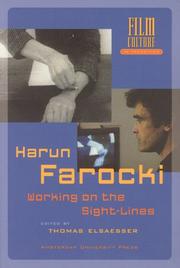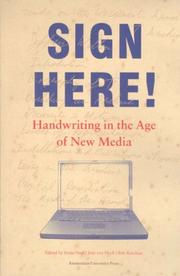| Listing 1 - 5 of 5 |
Sort by
|
Book
ISBN: 3653049547 3631623887 1322497885 3653998069 Year: 2015 Publisher: Bern Peter Lang International Academic Publishing Group
Abstract | Keywords | Export | Availability | Bookmark
 Loading...
Loading...Choose an application
- Reference Manager
- EndNote
- RefWorks (Direct export to RefWorks)
The three-part work provides a first synthetic account of the history of the Polish intelligentsia from the days of its formation to World War I. The third part deals with the period between 1865 and 1918. It is the period of numerical growth of the intelligentsia, growth of its self-consciousness and at the same time of growing struggles and rivalries of various political streams. The study concludes with the moment when Poland regained the independence that had been lost in 1795. The work combines social and intellectual history, tracing both the formation of the intelligentsia as a social s
Intellectuals --- History. --- Poland --- Intellectual life. --- Intelligentsia --- Persons --- Social classes --- Specialists --- 1865–1918 --- Crossroads --- Edited --- History --- Jedlicki --- Jerzy --- Kulturgeschichte --- Micinska --- Parteipolititk --- Polish --- soziale Schichten
Book
ISBN: 3653049520 3631623755 1322497877 3653999448 Year: 2015 Publisher: Bern Peter Lang International Academic Publishing Group
Abstract | Keywords | Export | Availability | Bookmark
 Loading...
Loading...Choose an application
- Reference Manager
- EndNote
- RefWorks (Direct export to RefWorks)
The three-part work provides a first synthetic account of the history of the Polish intelligentsia from the days of its formation to World War I. Part one (1750-1831) traces the formation of the intelligentsia as a social class in the epoch of Enlightenment. It stresses the importance of the birth of bureaucratic institutions that created the demand for the educated stratum. It analyses the results of the collapse of the Polish-Lithuanian Commonwealth in 1795 - the ominous event that transformed the political geography of East Central Europe. The work combines social and intellectual history,
Intellectuals --- History. --- Poland --- Intellectual life. --- Intelligentsia --- Persons --- Social classes --- Specialists --- 1750–1831 --- Birth --- edited --- History --- Inteligentsia --- Janowski --- Jedlicki --- Jerzy --- Kulturgeschichte --- Parteipolitik --- Polish --- soziale Schichten

ISBN: 905356635X 9053566368 9786610958979 1280958979 9048505267 141752054X 9781417520541 9789053566367 9789053566350 9781280958977 9789048505265 Year: 2004 Publisher: Amsterdam : Amsterdam University Press,
Abstract | Keywords | Export | Availability | Bookmark
 Loading...
Loading...Choose an application
- Reference Manager
- EndNote
- RefWorks (Direct export to RefWorks)
Filmmaker, film essayist, installation artist, writer: the Berlin artist Harun Farocki has devoted his life to the power of images. Over the thirty-plus years of his career, Farocki has explored not the images of life but rather the life of images that surrounds us in newspapers, cinema, books, television, and advertising. Harun Farocki examines, from different critical perspectives, his vast oeuvre, which includes three feature films, critical media pieces, children's television features, 'learning films' in the tradition of Brecht, and installation pieces. Interviews, a selection of Farocki's own writings, and an annotated filmography complete a valuable biography of this pioneering artist and his legendary career.
Film Theory. --- Films. --- Installations (art). --- Film --- Music, Dance, Drama & Film --- Edited by Thomas Elsaesser --- kunst --- film --- documentaire --- experimentele film --- Farocki Harun --- Duitsland --- installaties --- twintigste eeuw --- eenentwintigste eeuw --- 791.471 FAROCKI --- 7.071 FAROCKI --- Motion picture producers and directors --- Farocki, Harun --- Criticism and interpretation. --- Faroqhi, Harun El Usman --- Farocki, Harun. --- PERFORMING ARTS / General.
Book
ISBN: 007004841X 9780070048416 Year: 1971 Publisher: New York (N.Y.): MacGraw-Hill
Abstract | Keywords | Export | Availability | Bookmark
 Loading...
Loading...Choose an application
- Reference Manager
- EndNote
- RefWorks (Direct export to RefWorks)
Noise control --- Vibration --- 534.83 --- Cycles --- Mechanics --- Sound --- Noise prevention --- Acoustical engineering --- Environmental engineering --- Noise --- Vibrations and their control. Control of disturbing noise. Noise abatement --- Noise control. --- Vibration. --- akoestiek --- geluid --- Edited by Leo L. Baranek --- fysica --- natuurkunde --- bouwfysica --- bouw --- muziek --- architectuur --- concertgebouwen --- isolatie --- geluidsisolatie --- trillingen --- 699.8 --- 534 --- 534.83 Vibrations and their control. Control of disturbing noise. Noise abatement

ISBN: 9053568166 9789053568163 9786610958214 904850547X 1280958219 1429454539 9781429454537 9789048505470 9781280958212 Year: 2006 Publisher: Amsterdam: Amsterdam university press,
Abstract | Keywords | Export | Availability | Bookmark
 Loading...
Loading...Choose an application
- Reference Manager
- EndNote
- RefWorks (Direct export to RefWorks)
Will handwriting survive the evolution of digital media? Sign Here explores the changing role of manual writing in a world of e-mail, text messaging, and other digital technology. In a series of fascinating essays, media scholars examine the changing concepts of originality, authenticity, and uniqueness-- both culturally and legally-- as digital media continue to rapidly expand.
Manuscripts. Epigraphy. Paleography --- Computer. Automation --- Writing --- Written communication --- Copying processes --- Mass media and technology --- Mass media and culture --- Social aspects --- Technological innovations --- Authorship. --- Copying processes. --- Information technology. --- Signatures (Writing). --- Writing. --- Written communication. --- Languages & Literatures --- Philology & Linguistics --- 003.64 --- Monogrammen. Anagrammen. Chronogrammen. Signeringen (als teken van originaliteit of herkomst) --- Edited by Sonja Neef, José Van Dijck, and Eric Ketelaar --- schrift --- handschrift --- nieuwe media --- computers --- generieken --- literatuur --- signatuur --- 791.5 --- 003.64 Monogrammen. Anagrammen. Chronogrammen. Signeringen (als teken van originaliteit of herkomst) --- Mass media and technology. --- Mass media and culture. --- Social aspects. --- Technological innovations. --- Culture and mass media --- Technology and mass media --- Autographic processes --- Commercial correspondence --- Duplicating processes --- Manifolding --- Reproduction processes --- Reprography --- Typewriting --- Written discourse --- Written language --- Chirography --- Handwriting --- Communication --- Discourse analysis --- Language and languages --- Visual communication --- Ciphers --- Penmanship --- Technology --- Culture --- Copying --- Copying services --- Documentation --- Letter services --- Writing - Social aspects --- Written communication - Technological innovations --- Copying processes - Social aspects --- dutch and flemish language --- nederlandse taal
| Listing 1 - 5 of 5 |
Sort by
|

 Search
Search Feedback
Feedback About UniCat
About UniCat  Help
Help News
News